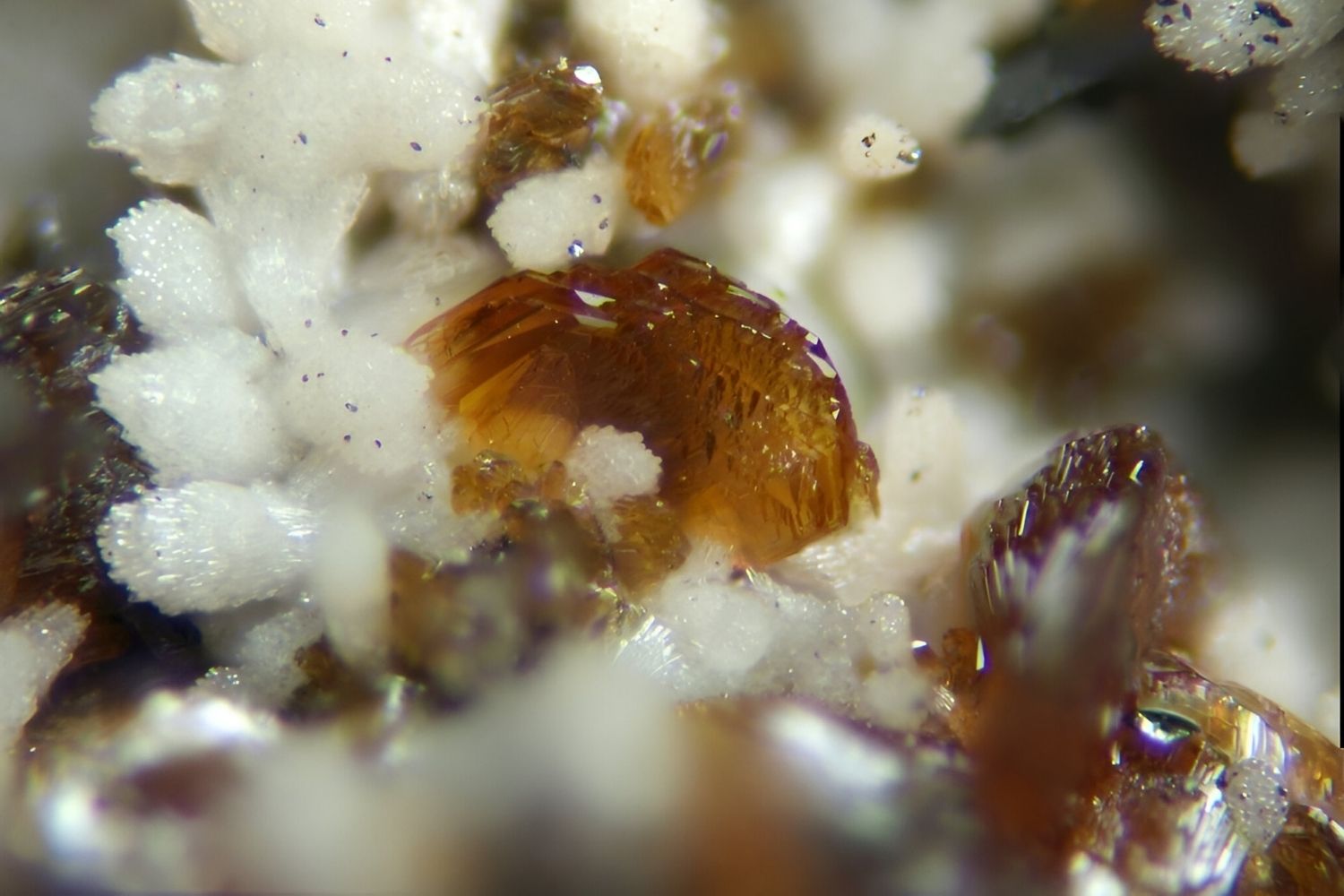
Gatehouseite might sound like a term from a sci-fi novel, but it's actually a fascinating mineral. Found in specific geological settings, this mineral has unique properties that make it a subject of interest for geologists and mineral enthusiasts alike. Gatehouseite is known for its distinct crystal structure and vibrant color, often forming in environments rich in manganese. This mineral isn't just a pretty face; it has practical applications in various fields, including industrial processes and scientific research. Whether you're a student, a hobbyist, or just curious about the natural world, learning about Gatehouseite can open up a whole new understanding of Earth's hidden treasures. Ready to dive into some intriguing facts about this remarkable mineral? Let's get started!
Key Takeaways:
- Gatehouseite is a rare and visually appealing mineral named after a British mineralogist. It forms in specific conditions and has niche uses, making it highly valued by collectors and researchers.
- Studying Gatehouseite presents challenges due to its rarity and softness. However, ongoing research continues to uncover valuable insights into its formation and properties.
What is Gatehouseite?
Gatehouseite is a rare mineral that has captured the interest of geologists and mineral enthusiasts alike. Its unique properties and limited occurrence make it a fascinating subject of study. Here are some intriguing facts about this mineral.
-
Gatehouseite is named after British mineralogist Bryan M. Gatehouse, who made significant contributions to mineralogy.
-
This mineral was first discovered in the Iron Monarch mine in South Australia.
-
Gatehouseite has a chemical formula of Mn5(PO4)2(OH)4.
-
It belongs to the phosphate mineral group, which includes minerals containing the phosphate anion (PO4).
-
The mineral typically forms in oxidized zones of manganese deposits.
Physical Properties of Gatehouseite
Understanding the physical properties of Gatehouseite can help identify it in the field. These properties include color, hardness, and crystal structure.
-
Gatehouseite crystals are usually brown to reddish-brown in color.
-
The mineral has a Mohs hardness of 4.5, making it relatively soft.
-
It exhibits a vitreous to dull luster, depending on the quality of the crystal.
-
Gatehouseite forms in orthorhombic crystal systems, which means its crystals are shaped like elongated rectangles.
-
The mineral has a specific gravity of approximately 3.5, indicating it is denser than average rock-forming minerals.
Occurrence and Formation
Gatehouseite's rarity is partly due to its specific formation conditions. It is found in only a few locations worldwide.
-
Besides South Australia, Gatehouseite has been found in the Kalahari Manganese Field in South Africa.
-
The mineral forms in the oxidized zones of manganese-rich deposits, often alongside other manganese minerals.
-
It is typically associated with minerals like rhodochrosite, hausmannite, and pyrolusite.
-
Gatehouseite can also form as a secondary mineral in hydrothermal veins.
-
The conditions required for its formation include low temperatures and the presence of phosphate-rich fluids.
Uses and Applications
While Gatehouseite is not widely used in industry, it has some niche applications and is highly valued by collectors.
-
Due to its rarity, Gatehouseite is primarily collected by mineral enthusiasts.
-
It is sometimes used in educational settings to teach about phosphate minerals and manganese deposits.
-
The mineral's unique properties make it a subject of study in mineralogical research.
-
Gatehouseite specimens can fetch high prices in the collector's market due to their scarcity.
-
It is also used in geological studies to understand the conditions of manganese deposit formation.
Interesting Facts
Here are some additional fascinating tidbits about Gatehouseite that highlight its uniqueness and allure.
-
Gatehouseite is often found in small, well-formed crystals, making it visually appealing to collectors.
-
The mineral's name was officially approved by the International Mineralogical Association in 1986.
-
Gatehouseite's discovery added valuable information to the study of phosphate minerals.
-
It is one of the few minerals that contain both manganese and phosphate in significant amounts.
-
The mineral's formation process can provide insights into the geochemical cycles of manganese and phosphorus.
Challenges in Studying Gatehouseite
Studying Gatehouseite presents several challenges due to its rarity and specific formation conditions.
-
Obtaining high-quality samples of Gatehouseite can be difficult due to its limited occurrence.
-
The mineral's softness makes it challenging to handle and study without causing damage.
-
Analyzing Gatehouseite requires advanced techniques like X-ray diffraction and electron microprobe analysis.
-
The mineral's association with other manganese minerals can complicate its identification and study.
-
Despite these challenges, ongoing research continues to uncover new information about Gatehouseite and its properties.
Gatehouseite's Fascinating World
Gatehouseite, a rare mineral, captivates with its unique properties and intriguing history. Found primarily in Scotland, this mineral boasts a striking blue-green hue, making it a favorite among collectors and geologists alike. Its formation involves a complex process of hydrothermal activity, which contributes to its rarity and value.
Understanding Gatehouseite's chemical composition reveals its significance in scientific research. Composed mainly of copper, zinc, and arsenic, it offers insights into geological processes and mineral formation. Its discovery has also led to advancements in mineralogy, providing valuable information for future studies.
Whether you're a seasoned geologist or a curious enthusiast, Gatehouseite's allure is undeniable. Its rarity, vibrant color, and scientific importance make it a mineral worth exploring. So next time you come across this fascinating mineral, take a moment to appreciate its unique characteristics and the stories it holds.
Frequently Asked Questions
Was this page helpful?
Our commitment to delivering trustworthy and engaging content is at the heart of what we do. Each fact on our site is contributed by real users like you, bringing a wealth of diverse insights and information. To ensure the highest standards of accuracy and reliability, our dedicated editors meticulously review each submission. This process guarantees that the facts we share are not only fascinating but also credible. Trust in our commitment to quality and authenticity as you explore and learn with us.
